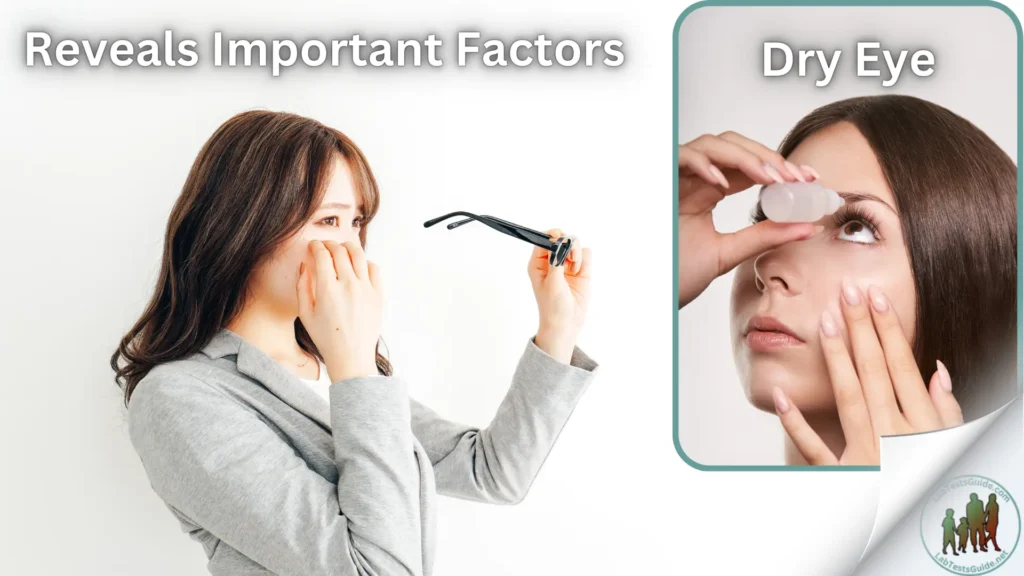Adult patients with dry eye revealed their different challenges and experiences when living with the disease.
A recent survey by Bausch + Lomb highlights the challenges faced by adults with dry eye disease, revealing gaps in awareness and the impact on daily activities.

The first State of Dry Eye survey, conducted by the Bausch + Lomb Corporation, has shed light on the challenges and experiences of adult patients suffering from dry eye and dry eye disease (DED). One of the significant revelations of the survey was that many patients were unaware that their symptoms could be associated with dry eye.
DED is a condition where the eyes do not produce enough tears or the tears evaporate too quickly, leading to dryness, redness, fluctuating vision, and overall eye irritation. Factors such as hormonal changes, age, environment, medications, and comorbidities can influence the development of DED. Treatment options include over-the-counter eye drops and prescription medications, as untreated dry eye can lead to more severe eye problems.
The State of Dry Eye survey, conducted by The Harris Poll on behalf of Bausch + Lomb, took place between April 15 and April 23, 2024, and included 2003 adults in the United States aged 18 and older. Among these, 461 participants either had been diagnosed with dry eye or frequently experienced eye dryness, while the rest did not report such symptoms. Data collected covered a range of demographic factors including age, gender, race/ethnicity, education, employment, household income, household size, and political party affiliation.
Key findings from the survey highlighted the significant adverse effects of dry eye on patients’ quality of life. Notably, 75% of patients with dry eye found the condition extremely or very bothersome, and 31% reported worsening symptoms over time. Additionally, 81% of patients with dry eye said they are constantly aware of how their eyes feel, and 46% mentioned that they could practically “hear themselves blink” due to the severity of their symptoms.
The survey also revealed the impact of dry eye on daily activities. A significant portion of patients (67%) reported having to give up or reduce certain activities to alleviate their symptoms, such as screen time (32%), spending time outdoors (25%), and wearing makeup (24%). Reading (45%), device use (35%), and driving (31%) were the most affected activities.
Despite these challenges, the survey indicated a lack of awareness about treating and preventing dry eye. A notable 70% of respondents admitted to not knowing much about prevention or treatment. Many respondents did not associate symptoms like tired eyes (38%), sensitivity to light (27%), and redness (19%) with DED, and only 15% reported experiencing regular eye dryness. Furthermore, 43% of respondents did not visit their eye doctor routinely, and 66% were unaware that DED is increasingly common among younger people.
“The prevalence of dry eye is growing, particularly among a younger demographic, in large part due to modern lifestyles and heavy digital device use,” said Yehia Hashad, MD, executive vice president, Research & Development, and chief medical officer at Bausch + Lomb.
More than half of the diagnosed patients (52%) believed that dry eye was difficult to treat, and 44% of all respondents were unaware that untreated dry eye could lead to other eye problems, including DED.
These findings underscore the daily challenges faced by patients with dry eye and highlight the need for better education about the disease. Increasing awareness about DED can help patients recognize their symptoms and seek treatment from an eye doctor, potentially preventing more serious complications. Identifying the biggest challenges and most common symptoms through this survey is a crucial step in improving the management of dry eye.
Article Highlights:
- Survey Overview:
- Conducted by Bausch + Lomb Corporation.
- Named “State of Dry Eye” survey.
- Survey period: April 15-23, 2024.
- Conducted by The Harris Poll.
- Included 2003 adults in the U.S., aged 18+.
- 461 participants diagnosed with dry eye or experiencing frequent dryness.
- Key Findings:
- Symptoms and Awareness:
- Many patients unaware their symptoms were associated with dry eye.
- 75% found the condition extremely or very bothersome.
- 31% reported worsening symptoms over time.
- 81% constantly aware of eye discomfort.
- 46% could “hear themselves blink” due to severity.
- Impact on Daily Activities:
- 67% had to give up or reduce activities to alleviate symptoms.
- Most affected activities: reading (45%), device use (35%), driving (31%).
- Awareness and Treatment:
- 70% lacked knowledge about prevention/treatment.
- 38% didn’t associate tired eyes, 27% sensitivity to light, and 19% redness with DED.
- 15% experienced regular eye dryness.
- 43% didn’t visit their eye doctor routinely.
- 66% unaware DED is common among younger people.
- Symptoms and Awareness:
- Challenges and Misconceptions:
- 52% of diagnosed patients believed dry eye was difficult to treat.
- 44% unaware untreated dry eye could lead to other eye problems.
- Expert Insight:
- Dr. Yehia Hashad highlighted the growing prevalence of dry eye, especially among younger demographics due to modern lifestyles and heavy digital device use.
- Conclusion:
- Survey highlights daily challenges for dry eye patients.
- Emphasizes the need for better education on DED.
- Raising awareness can help patients recognize symptoms and seek treatment, potentially preventing serious complications.
Possible References Used






